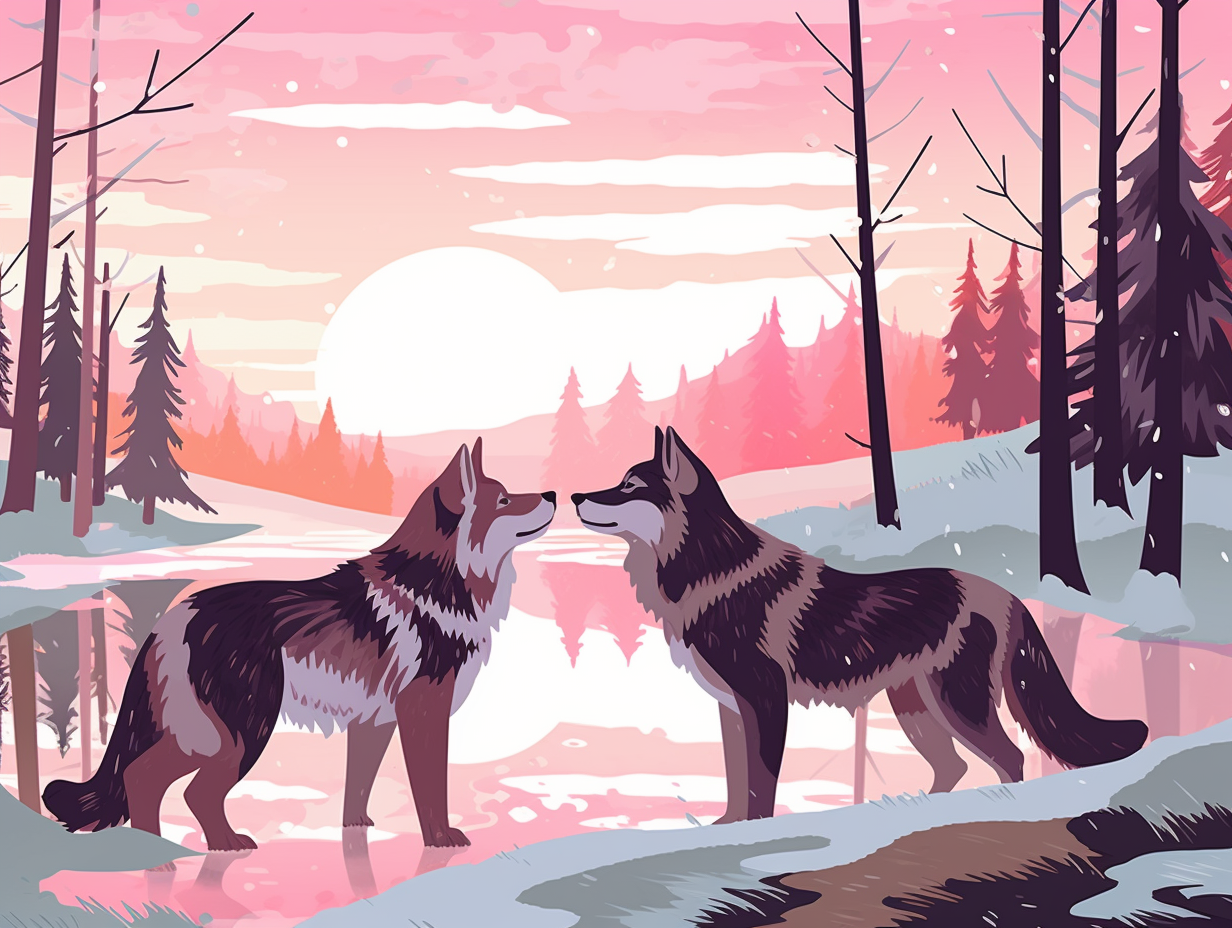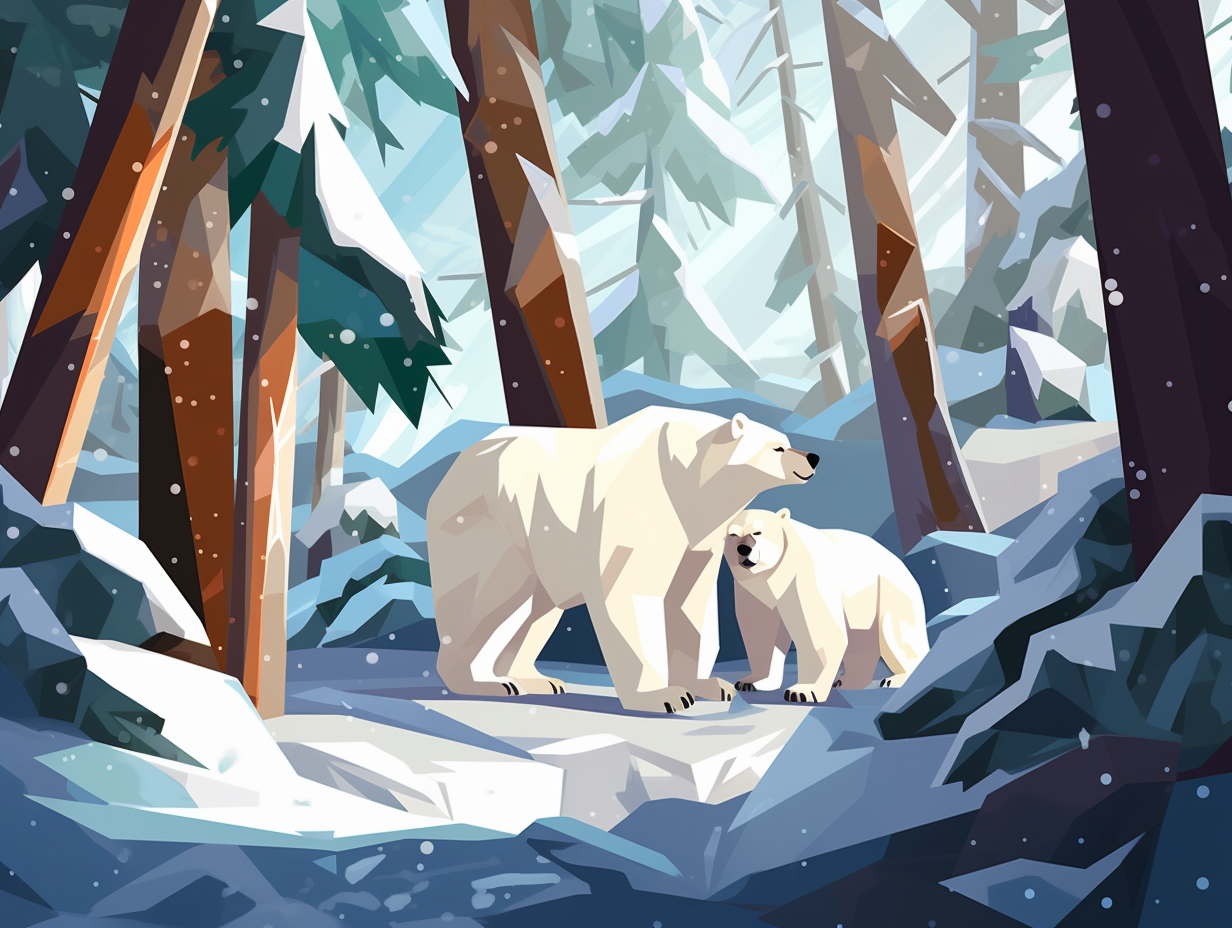Discover the Wild Side: Top 21 Unbelievable Fun Facts About Wolves You Never Knew!

1. Wolf Family Therapists
Move over, Dr. Phil, wolves are the true family therapists: Wolves form strong emotional bonds within their pack, relying on each other for survival through collaborative hunting, pup-rearing, and territory defense. This social structure allows for communication, learning, and knowledge transfer across generations, proving that the "lone wolf" stereotype is rather ruff on these pack-loving canines!
Source => livingwithwolves.org
2. Mariah Carey of the Canine World
Move over, Mariah Carey and Whitney Houston, wolves have got the vocal game on lock: Researchers have discovered that Iberian wolves have incredibly distinct howls, with variables in fundamental frequency and modulation, allowing for individual identification with high accuracy.
Source => academic.oup.com

Did you know gray wolves love playing games and chasing butterflies? Discover their playful side and other pawsome facts!
=> Fun Facts about Gray-Wolves
3. Swimming Wolf Pursuit
If you thought werewolves were the only strong swimmers in the canine world, think again: wolves themselves have been known to doggy paddle up to 8 miles in pursuit of prey or land, with their adaptability allowing them to thrive in diverse habitats like forests, tundra, and deserts.
Source => animalark.org
4. Wolf Babysitting Duties
Whoever said "it takes a village to raise a child" must've been a wolf in their past life: Adult members of a wolf pack take turns playing with and babysitting their pups at a designated area, forming an unbreakable bond while their fellow pack members fetch dinner, ensuring the survival and blossoming of future furry generations!
Source => wolf.org

5. Van Gogh Canines
Who says wolves can't leave their mark on the world? As the original doggy Van Goghs, these furry artists use their very own unique method to stake their claim: Wolves communicate mainly through scent marking, using urination as their primary method of expression. With scent glands between their toes, they leave their signature wherever they roam, claiming territories and food resources with artful precision.
Source => wolfhaven.org
6. Arabian Nights Furballs
They might not be the "big bad wolves" of folklore, but these diminutive furballs definitely have an Arabian "Nights" vibe: The Arabian wolf, a subspecies of the grey wolf, is among the smallest of all wolves, standing at merely 25-26 inches tall, and weighing a modest 45 pounds – but don't underestimate their prowess, as they masterfully hunt down prey like Nubian ibex, gazelles, Asiatic wild ass, hares, and rodents!
Source => en.wikipedia.org
7. Wolves: Stockbrokers of the Wild
Move over, “The Wolf of Wall Street” – in the wild, wolves are the stockbrokers of their ecosystems, keeping the stocks of elk and vegetation from plummeting!: As expert prey population regulators, wolves not only improve vegetation growth but also lay a smorgasbord for scavengers, ramping up the biodiversity party in the wild.
Source => livingwithwolves.org
8. Race-Winning Wolves
"In the race between the tortoise and the hare, the wolf was the real winner that nobody saw coming: Gray wolves can run at staggering speeds of up to 55 to 70 kph (34 to 43.5 mph) and cover around 200 km (124 miles) per day with their various activities, including hunting."
Source => seaworld.org
9. Aquatic Adventures of Sea Wolves
Forget being a bearded sailor or a pirate with a peg-leg, sea wolves have got the real aquatic adventures covered: These incredible swimmers can effortlessly backstroke for up to 8 miles in icy water, making seafood a whopping 90% of their diet, because, you know, devouring fish is their equivalent of fish and chips on a Friday night!
Source => rangerplanet.com

10. Ecosystem Engineer Wolves
Who let the wolves out? Ecosystem engineers, that's who: Wolves, when reintroduced to Yellowstone National Park, kick-started a chain reaction of vegetation recovery, erosion reduction, and fostered improved habitats for aquatic wildlife, highlighting their vital role in maintaining the balance of the ecosystem.
Source => wdfw.wa.gov
11. Wolves Need Real Estate Help
Oh, there's no place like home for the howl-idays, but it looks like some four-legged furballs might need a bit of real estate assistance from Dorothy and Toto: turns out wolves occupy less than 10% of their historic range in the lower 48 states, with the Center for Biological Diversity pushing for the resettlement of our fang-tastic friends in remaining suitable habitats so they can reclaim their eco-paw-er.
Source => biologicaldiversity.org
12. Wolf Pups' Trendy Facial Hair
When the moon is full and the wolf pups step out for a howlin' good time, they're looking quite trendy with their new facial hair: Around the age of 31 days, wolf pups start to develop their adult hair around their nose and eyes during their socialization period, and later, during their juvenile period, their winter fur makes them almost indistinguishable from the grown-up wolves.
Source => wolf.org
13. Twinkle, Twinkle Little Howl
Twinkle, twinkle little howl, are you calling for a night out or staking your turf in the hood? Well, we're here to unveil the mystery: Wolves howl more at night than during the day to communicate with their pack, request backup in a hunt, and assert dominance over their territory - their melodious symphonies can serenade the moon from up to seven miles away!
Source => wonderopolis.org
14. Wolverines' Olfactory Prowess
When a wolf attends a dinner party, they never need to play "Where's Waldo?" with the hors d'oeuvres – their nose knows: Wolverines possess a remarkable olfactory prowess, boasting roughly 280 million scent receptors that can detect prey from 1.5 miles away, and even sense the presence of a moose or caribou buried under ten feet of snow, as evidenced by wolf expert Gordon Haber's research.
Source => paulawild.ca

15. Tasting Menu of 38 Wolf Flavors
Wolf it down, folks! The canine world is serving up a tasting menu of more than 38 flavors, showcasing wolves from icy Scandinavia to sizzling Southern Palestine: Canis lupus boasts a baffling array of 38 unique subspecies, each with its own delectable combination of physical characteristics and habitat preferences, making this species quite the smorgasbord of biodiversity.
Source => en.wikipedia.org
16. Wolves: Sniffing Success Like a Boss
Sniffing success like a boss: Wolves have olfactory centers in their brains the size of a fist, helping them detect unique smells from other wolves and even aiding field technicians to deter them from approaching livestock by utilizing their incredible sense of smell.
Source => defenders.org
17. Wolves' CozyCabins Territories
Who needs a McMansion when you can live in a CozyCabin?: Wolves smartly choose the perfect size for their territories based on prey density, competition, and how easily they can travel to find food, with some Montana wolf packs' territories ranging from a tidy 7.5 to a sprawling 214 square miles.
Source => wolf.org
18. Fur-ocious Wolf Soirees
Whoever said wolves don't have a rich social life clearly never got an invite to one of their fur-ocious soirees, packed with face-to-face chatting and rolling in the chicest scents: Wolves exhibit a complex communication system involving a blend of vocal and non-vocal cues—including body language, facial expressions, ear and tail positioning, scent marking, and a medley of growls, barks, whines, yips, and howls—to maintain their social hierarchy and convey intentions to fellow furry comrades.
Source => livingwithwolves.org
19. Keeping Your Distance from Wolves
Though Little Red Riding Hood made it to grandma's house safe and sound, you might want to be a bit more cautious when you spot a pack of wolves: Maintaining a distance of at least 100 yards is essential, as wolves can become habituated to humans and lose their fear; in rare cases of close encounters, stay calm, crank up the theatrics with loud noises, and even break out the bear spray or air horn to coax them away.
Source => dfw.state.or.us
20. High Altitude Himalayan Wolves
Whoever said wolves couldn't handle high altitudes must be a Himalayan altar ego: The Himalayan wolf boasts a unique genetic adaptation to the RYR2 gene, allowing their heart to beat just fine in low oxygen levels at elevations above 4,000 meters, leaving them well-equipped to thrive in their mountainous abode.
Source => animalia.bio
21. Wolves' Heartwarming Pack Dynamics
Forget werewolf dramas and lone wolf cliches, real wolves are all about family game night and lending a shoulder to cry on: Wolves have intricate social structures within their packs, creating emotional bonds and distinct cultures while playing together even in their senior years and providing care to injured pack members.
Source => livingwithwolves.org
Related Fun Facts




















